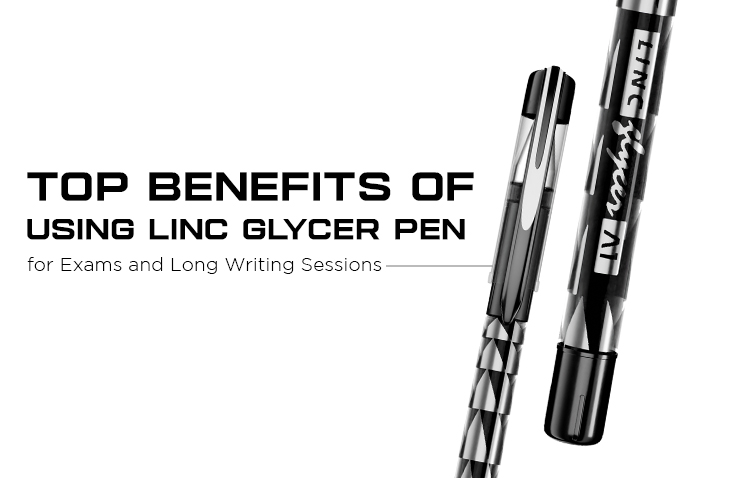6B, 2B and 2HB: Which Shade of Pencil Suits Your Purpose?

While William Shakespeare was busy creating the texts for the future, there was another important development taking place during the 1500s - the mining of a carbon material that was dark and powdery in nature. This was seen as extremely useful for artists and it came to be known as graphite (which means ‘to write’ in Greek).
Interestingly, what we call ‘lead’ in a pencil is actually a mixture of graphite and clay together. This fusion was first attempted by Nicholas-Jacques Conte in 1795 since he understood how this combination would allow him to alter the hardness of pencil leads for various shades of black.
As simple as it sounds, modern-day graphite pencils have systems to differentiate between them. These are known as graphite grading scales. In short, they indicate the ‘hardness’ or ‘softness’ of the pencil’s so-called lead and expose their different results on paper.
Making Sense of the Pencil Grades: How to Distinguish Between Each
Before diving into the deep, take a look at the entire range of graphite drawing pencils:
9B, 8B, 7B, 6B, 5B, 4B, 3B, 2B, B, HB, F, H, 2H, 3H, 4H, 5H, 6H, 7H, 8H, 9H
Have you ever wondered what these little numbers at the end of your pencil mean? Yes, it can be confusing when you first try to decode the meaning of a 6B or 4H individually. Break it down and first try and understand the meaning behind each alphabet and what it indicates in itself.
- H reveals the hardness of a pencils mark
- B reveals the blackness of a pencils mark
- F reveals the pencils ability to maintain a fine point
H will indicate how hard the lead of a pencil is. To make this clear, look at the range mentioned above. Travelling upwards from H to 2H will mean a harder graphite core. As 2H will be harder than an H, a 6H is really, really hard but will produce lighter and thinner lines than the rest.
B relates the softness of the lead to the blackness of the mark. The higher the number, the softer the lead and hence, the blacker the mark. Take a look at the range of values again. As you move downwards from B to 2B, you’ll find that the graphite core will be softer at each point. Keeping this in mind, the lead of a 6B lead will be much softer than a 2B and hence, will produce a blacker impression.
HB enjoys middle status. Its position implies an ability to produce both darker and lighter marks but disregarding the extremes. Moreover, there are no set standards that lay down how black or thick HB leads should be in particular. What one manufacturer considers HB may not be the same for another.
F pencils are similar to this but are slightly harder in the sense that they can stay sharp for a longer period of time. It rarely requires sharpening, which is why the F indicates a fine point. As a matter of fact, it is a single grade without a number since there is only one variant.
The HB Grading System: What Do the Grades Mean For You?
Pencils with H grades tend to be super smudge-resistant. You can also expect cleaner lines as an advantage but keep in mind that hard leads are scratchy and the flaws are best seen as you move upwards in the range. Technical drawings, light sketches and outlines, H graded pencils find use in various types of artwork.
Thanks to the brush-like expressions they create, B leads (especially 10 B) are preferred by animators for their smooth ability and heavy lines without friction. Even as they smudge easily, they can be readily erased and their magic lies in their butter-like features while working.
HB occupies a great place for writers and artists alike since the results are dark enough to be read clearly alongside minimal smudging.
Here’s a small cheat sheet in case of any confusion:
- H and HB’s are generally good for sketching
- 4B and 6B’s are preferred for shading
- HB and 2HB’s are ideal for writing purposes
- B pencils tend to produce more ‘shine’ than H’s
- H pencils can stay sharper for longer periods
Different grades showcase different degrees of hardness and will produce different types of marks. As the hardness or softness of a lead influences its strength and smoothness, moving up and down the scales can lead to a comprehensive range of effects.
Graphite pencils are available in a series that spans across 9B to 9H. While 9H is typically the hardest and lightest graphite pencil, 9 B is the softest lead available, so soft that it’s rarely used! So it’s never really about the numbers. It’s about understanding the relationship between the letter and the number together and actually experimenting between each combination.
However, do factor in the three simple things while working: Pressure placed on the pencil, the texture of the paper and how you go about doing it.
Everything else depends on how you ‘Linc” these pencils to your needs.





Leave a Reply